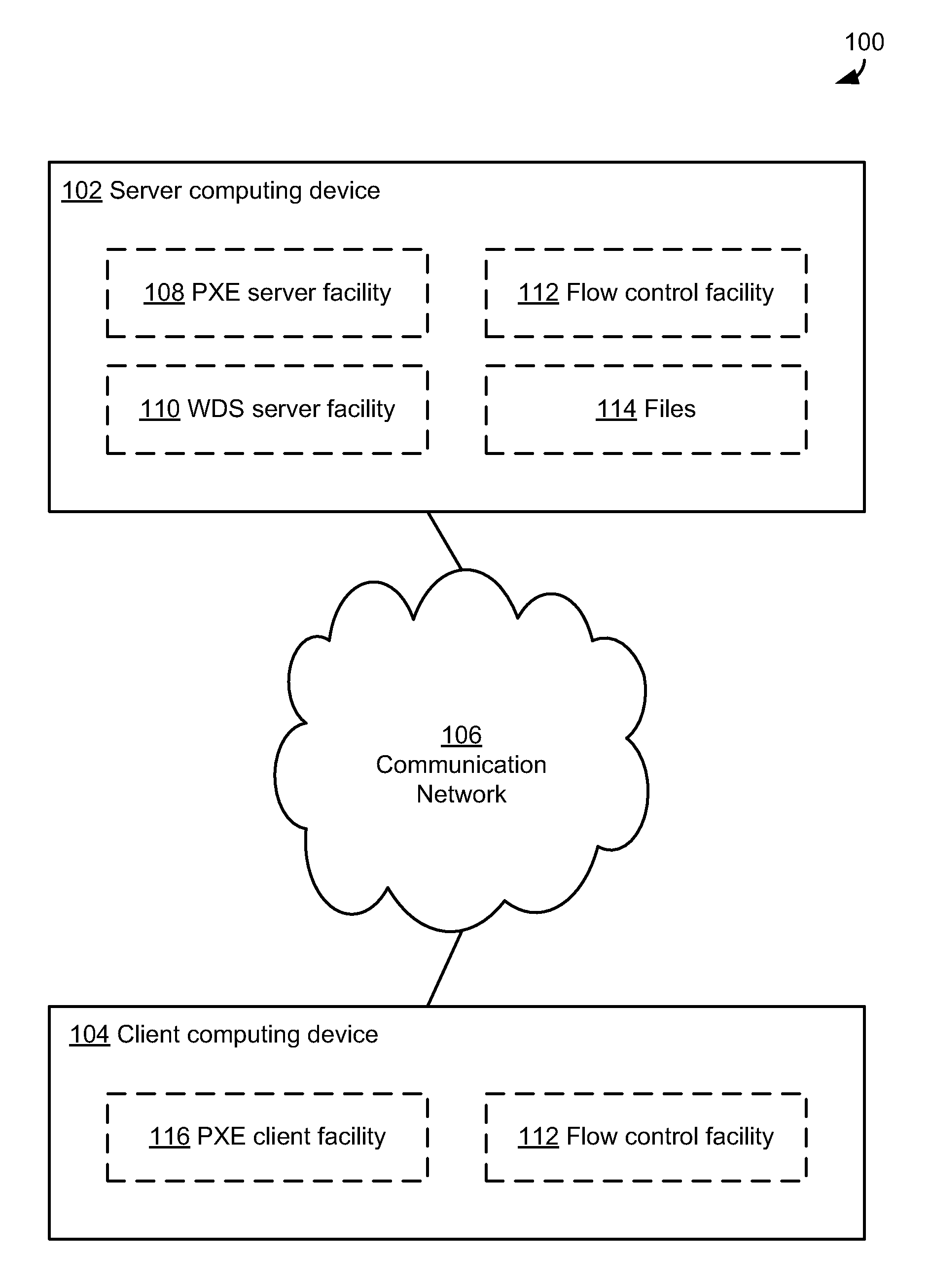Client-adjustable window size for connectionless transfer protocols
a client-adjustable, transfer protocol technology, applied in the direction of instruments, digital computers, computing, etc., can solve the problems of requiring a great deal of resources from the devices running, programs that implement the protocol, occupying a lot of storage space or processing time, etc., to achieve the effect of little bandwidth, little data to be transferred, and little bandwidth
- Summary
- Abstract
- Description
- Claims
- Application Information
AI Technical Summary
Benefits of technology
Problems solved by technology
Method used
Image
Examples
Embodiment Construction
[0020]Connectionless content unit transfer protocols (also simply called connectionless transfer protocols herein), including the Trivial File Transfer Protocol (TFTP), are used in a variety of environments. For example, TFTP may be used in installing operating systems remotely.
[0021]In many cases, installing an operating system on a computing device requires a user to directly, manually operate that computing device to copy the operating system from a disc available locally, on the computing device. Such copying from a local disc can include copying from a Compact Disc (CD) or Digital Versatile Disc (DVD) being read by a component of the computing device. Such copying requires a user to visit the computing device to perform the installation, such that the disc (e.g., the CD) can be inserted into the computing device. Visiting the computing device may be difficult or burdensome in some cases, though. For example, if a user is a network administrator responsible for a network with ma...
PUM
 Login to View More
Login to View More Abstract
Description
Claims
Application Information
 Login to View More
Login to View More - R&D
- Intellectual Property
- Life Sciences
- Materials
- Tech Scout
- Unparalleled Data Quality
- Higher Quality Content
- 60% Fewer Hallucinations
Browse by: Latest US Patents, China's latest patents, Technical Efficacy Thesaurus, Application Domain, Technology Topic, Popular Technical Reports.
© 2025 PatSnap. All rights reserved.Legal|Privacy policy|Modern Slavery Act Transparency Statement|Sitemap|About US| Contact US: help@patsnap.com



